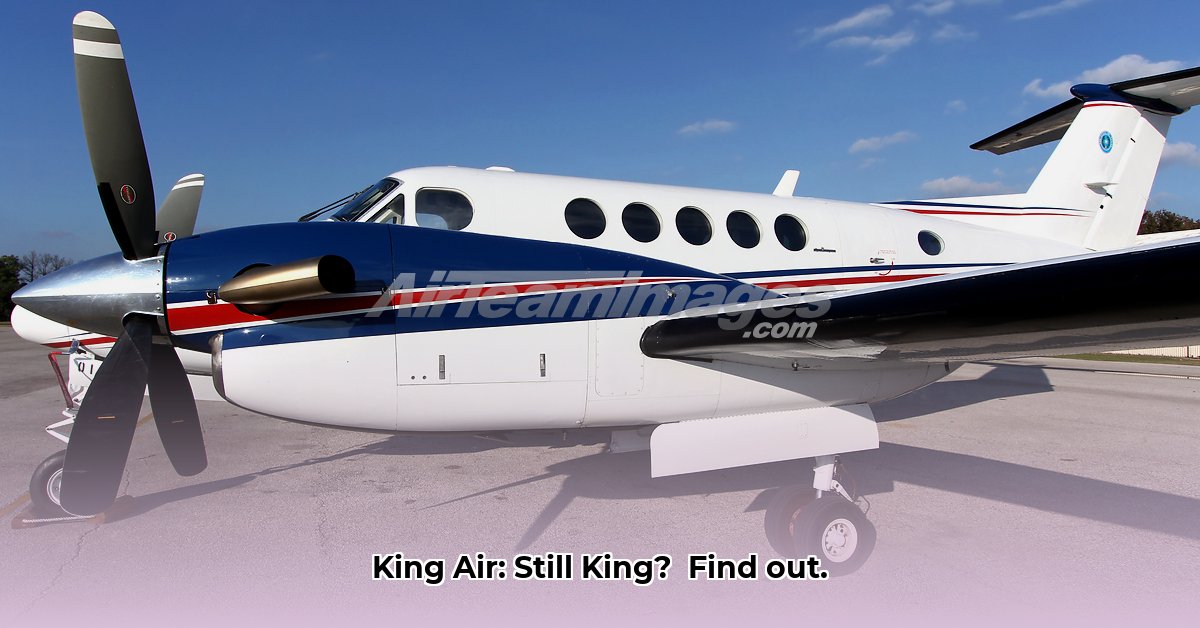
The Beechcraft King Air: a name synonymous with dependable air travel for over six decades. This turboprop workhorse has consistently reigned supreme in sales charts, a testament to its robust build and unwavering reliability. But the aviation landscape is evolving rapidly. Faster jets and more fuel-efficient turboprops are nipping at its heels. Can this iconic aircraft maintain its market leadership? This analysis delves into the King Air's history, competitive landscape, future prospects, and strategies for sustained dominance.
A Storied History: From Humble Beginnings to Aviation Icon
The King Air's journey began decades ago, evolving through continuous improvements and model variations. Each generation built upon its predecessor, refining design, increasing performance, and enhancing features. This continuous evolution is a cornerstone of its enduring success. We're not talking small tweaks; these are substantial advancements in engine technology, avionics, and overall efficiency. This dedication to improvement has kept the King Air ahead of the pack. The sheer volume of King Airs sold is a powerful indicator of its lasting appeal – thousands have taken to the skies, proving their worth in various roles from corporate transport to cargo hauling. This widespread adoption underscores its versatility and resilience. Doesn't this speak volumes about the King Air's enduring popularity amongst different sectors?
The Competitive Squeeze: New Entrants and Shifting Sands
The aviation market is far from static. Sleek light jets now offer faster travel times, enticing customers who prioritize speed. Meanwhile, competitor turboprops boast impressive fuel efficiency gains, making them attractive to budget-conscious operators. Aircraft like the Pilatus PC-12 and Embraer Phenom 100, for example, pose a significant challenge to the King Air's dominance. These newer models might lack the King Air's rugged versatility, but their appealing features are undeniable. How can the King Air maintain its edge in this intensifying market?
Staying Ahead of the Curve: Embracing Technological Advancements
Adaptability is key to the King Air's survival. We're not just talking incremental changes, but transformative upgrades. Advanced avionics are a necessity; imagine a state-of-the-art cockpit teeming with user-friendly technology that enhances safety and operational efficiency. Furthermore, exploring hybrid-electric propulsion could drastically reduce its environmental footprint – a critical consideration for environmentally-conscious operators. Adopting such green technology would position the King Air as a leader in sustainable aviation. These aren't mere luxuries; they're vital for remaining competitive. The integration of such technologies is crucial for future relevance. What further technological leaps will be essential for the King Air to stay relevant in the future?
Market Outlook: A Prognosis for the King Air
While the Beechcraft King Air still commands a substantial market share, maintaining its top position requires a strategic approach. We project ongoing refinements to current models, coupled with the introduction of entirely new variants. These next-generation King Airs will likely incorporate cutting-edge technologies and improved designs to meet evolving customer needs. The company needs to anticipate and effectively respond to these shifts. This will likely involve close collaboration with suppliers and incorporating feedback from operators to maintain a strong market connection. The King Air's long-term success hinges on a proactive and responsive strategy. What are the key market drivers that will shape the future of the King Air?
Strategies for Success: A Roadmap for Stakeholders
To ensure the King Air's continued prosperity, stakeholders must adopt focused strategies:
Beechcraft/Textron:
- Short-Term: Enhance the customer experience with a streamlined online purchasing process and exceptional after-sales service.
- Long-Term: Invest heavily in research and development, exploring groundbreaking technologies like hybrid-electric propulsion and advanced materials.
Pilots and Operators:
- Short-Term: Prioritize ongoing training to stay informed about technological advancements and best practices.
- Long-Term: Actively support initiatives that promote sustainable aviation and advocate for sensible regulations fostering innovation.
Regulators (FAA, EASA, etc.):
- Short-Term: Update safety regulations to keep pace with modern technological advancements.
- Long-Term: Develop clear, comprehensive guidelines for emerging technologies like hybrid-electric propulsion, ensuring safety and interoperability.
Competitors:
- Short-Term: Invest in innovation and differentiation to remain competitive.
- Long-Term: Industry collaboration can lead to advancements benefiting everyone, fostering a more sustainable aviation sector.
Conclusion: A Legacy Takes Flight
The Beechcraft King Air's future isn't predetermined. Its impressive history speaks to its enduring design and loyal customer base. However, navigating the challenges ahead requires a proactive, innovative approach. The next chapter of this aviation legend will be a compelling blend of tradition and cutting-edge technology. The King Air's continued triumph hinges on successfully managing this complex intersection. What innovative strategies will ultimately determine the King Air’s future success?